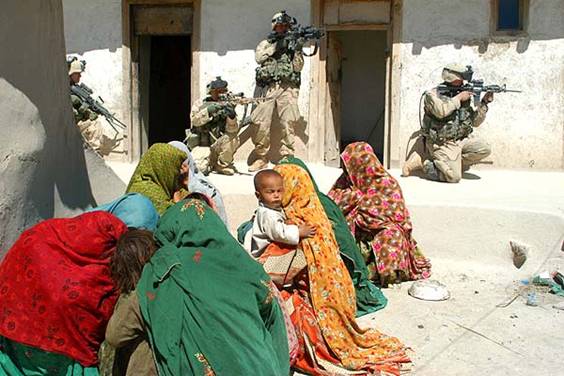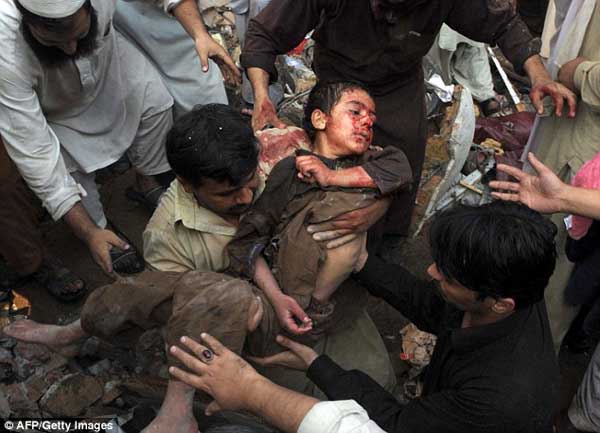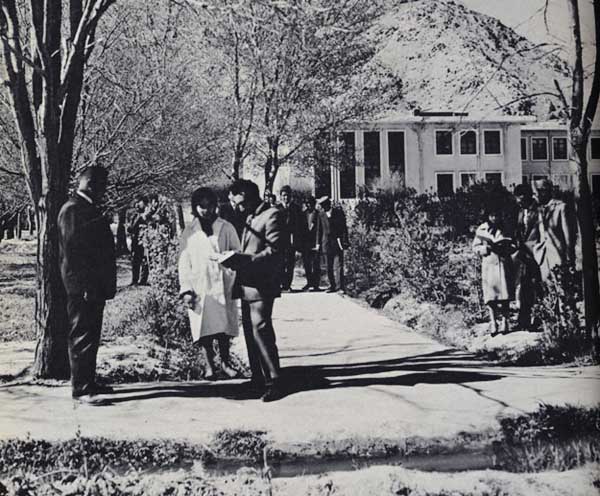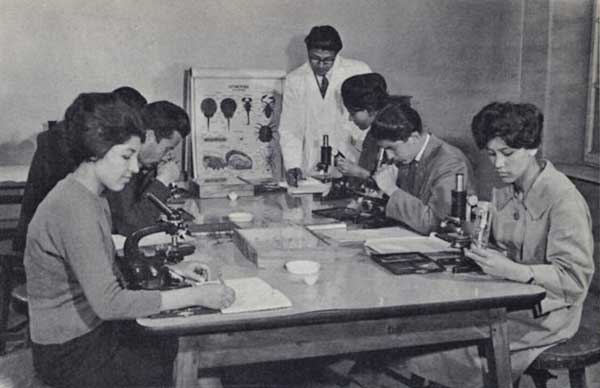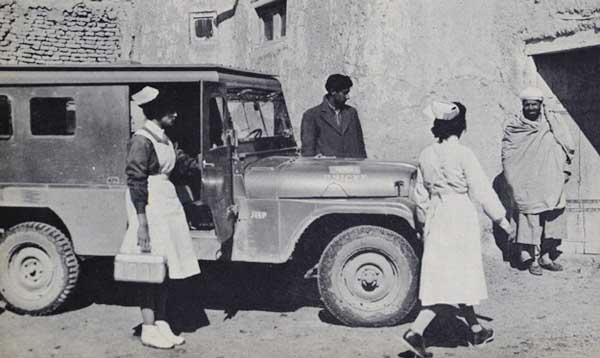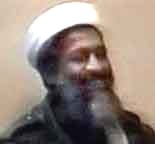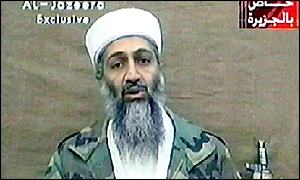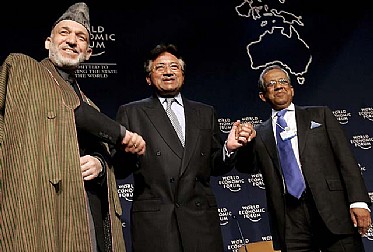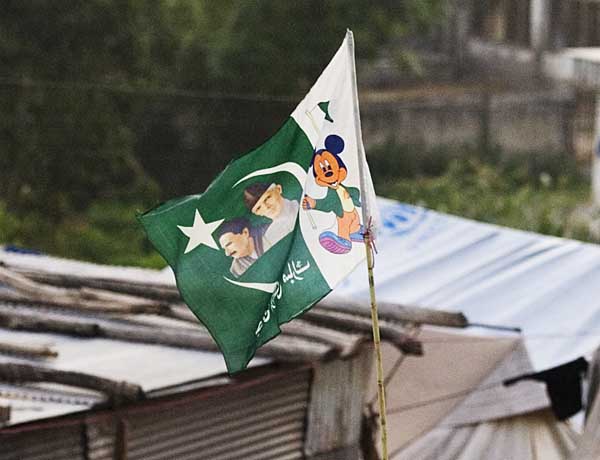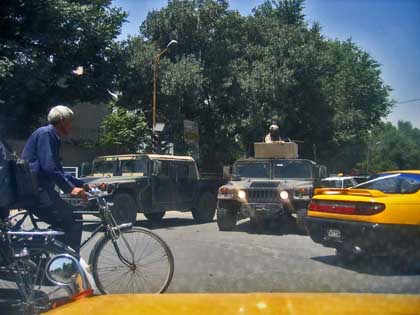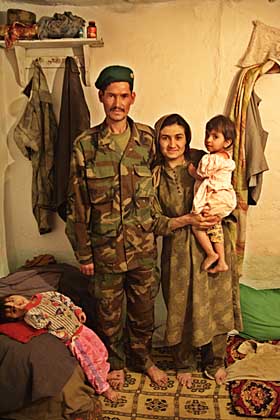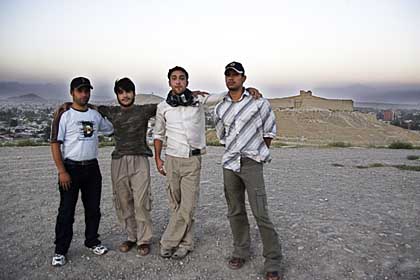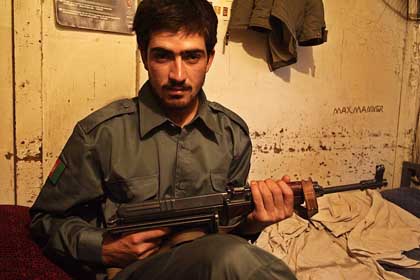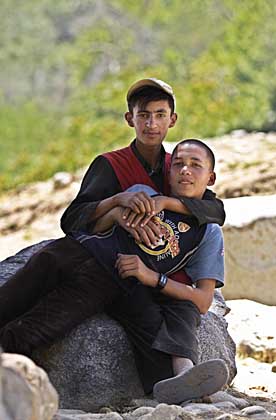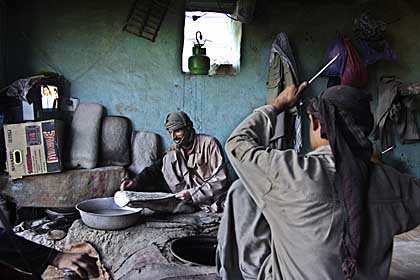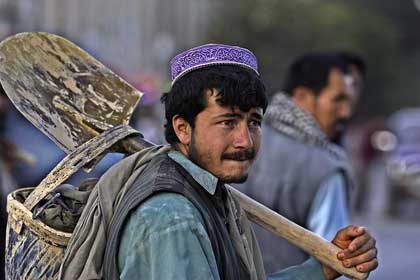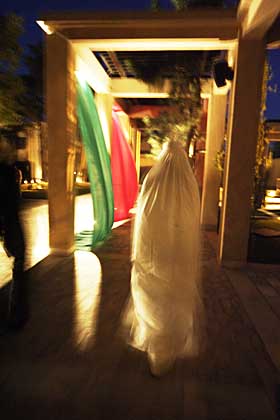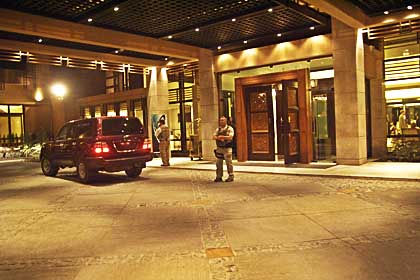Vinay Lal teaches history at the University of California, Los Angeles and is presently with the University of California Education Abroad Programme in India.
Barack Obama is poised to become the 44th president of the United States. Many see in the ascendancy of a black man to the highest office of the world?s hegemon a supremely historic moment in American if not world affairs. Such is the incalculable hold of the US, in times better or worse, on the imagination of people worldwide that many are more heavily invested in the politics and future of the US than they are in the politics of their own nation.
There may yet be method to this maddening infatuation, for Iraqis, Afghanis, and Pakistanis, among many others, known and unknown, the target at some point of the military wrath and moral unctuousness of America, may want to reason if their chances of being bombed back into the stone age increase or decrease with the election of one or the other candidate. The French, perhaps best known for the haughty pride in their own culture, were so moved by the events of September 11, 2001, which the Americans have attempted to install as a new era in world history, rendering 9/11 as something akin to BC or AD, that Le Monde famously declared, ?Nous sommes tous Americains? (?We are all Americans?). One doubts that, had it been Beijing, Delhi, or Dakar that had been so bombed, the French would have declared, We are All Chinese, Indians, or Senegalese. That old imperialist habit of presuming the royal We, thinking that the French or American we is the universal We, has evidently not disappeared.
Obama vs McCain
There can be little question that Obama?s presidency would be much preferable to that of McCain. If nothing else, his presidency is not calculated to be an insult to human intelligence or a complete affront to simple norms of human decency. After eight years of George W Bush, it seemed all but improbable that America could throw up another candidate who is, if not in absolutely identical ways, at least as much of an embarrassment to the US as the incumbent of the White House. But one should never underestimate the genius of America in throwing up crooks, clowns and charlatans into the cauldron of politics. It is likely that McCain has a slightly less convoluted ? or should I say jejune ? view of world history and geography than Bush, nor is his vocabulary wholly impoverished, but he will not strike anyone with a discerning mind as possessed of a robust intelligence. McCain has already committed so many gaffes, accusing (to take one example) Iran of training Al Qaida extremists, that one wonders whether his much touted ?foreign policy experience? amounts to anything at all.
In America, it is enough to have a candidate who understands that Iraq and Iran are not only spelled differently but constitute two separate nations. Obama seems so far ahead of the decorated Vietnam war veteran in these respects that it seems pointless to waste any more words on McCain. Obama writes reasonably well, and even been lauded for his skills as an orator; he is suave, mentally alert, and a keen observer of world affairs.
Far too many American elections have offered scenarios where a candidate has been voted into office not on the strength of his intelligence, sound policies, or moral judgment, but because the candidate has appeared to be ?the lesser of two evils?. The iconoclast Paul Goodman, writing in the 1960s, gave it as his considered opinion that American elections were an exercise in helping Americans distinguish between undistinguishable Democrats and Republicans, and there are, notwithstanding Obama?s appeal to liberals and apparently intelligent people, genuine questions to be asked about whether this election will be anything more than a choice between Tweedledee and Tweedledum.
Candidates with wholly distinct views have always been described as ?spoilers? in the American system, and anyone who do not subscribe to the rigidly corporatist outlook of the two major parties can only expect ridicule, opprobrium, and at best colossal neglect. To this extent, whatever America?s pretensions at being a model democracy for the rest of the world, one can marvel at the ease and brilliance with which dissenters are marginalised in the US. The singularity of American democracy resides in the fact that it is, insofar as democracies are in question, at once both perversely primitive and advanced. In its totalitarian sweep over the political landscape, the one-party system, which through the fiction of two parties has swept all dissent ? indeed, I should say all thought ? under the rug, has shown itself utterly incapable of accommodating political views outside its fold; and precisely for this reason American democracy displays nearly all the visible signs of stability, accountability, and public engagement, retaining in its rudiments the same features it has had over the last two centuries.
A New Obama after the Election?
Obama?s most ardent defenders have adopted the predictably disingenuous view that Candidate Obama has had to repress most of his liberal sentiments to appeal to a wide electorate, and that president Obama will be much less ?centrist? in his execution of domestic and foreign policies. (The US is one country where most hawks, particularly if they are ?distinguished? senior statesmen, can easily pass themselves off as ?centrists?, the word ?hawk? being reserved for certified lunatics such as Bill O?Reilly and Rush Limbaugh, or blatantly aggressive policymakers such as Paul Wolfowitz. No one would describe Colin Powell, who shares as much responsibility as anyone else for waging a criminal war on Iraq, as a hawk.)
Of course much the same view was advanced apropos Bill Clinton, who then went on to wreck the labour movement, cut food stamps, initiate welfare ?reform? that further eroded the entitlements of the poor, and launch aggressive military strikes in Afghanistan, Iraq, Somalia, Kosovo, and a host of other places. Moreover, unless one is to take the view that Obama thought of his candidacy overnight, it is equally reasonable to argue that, knowing how much he would have to appeal to the rank and file of not only Democrats but the large number of ?undecided? voters as a candidate who would be markedly different from both the incumbent and the Republicans running for the presidency, Obama has been projecting himself as far more liberal than either his political record or views would give warrant to believe. Indeed, as a close perusal of his writings, speeches, and voting record suggests, Obama is as consummate a politician as any in the US, and he has been priming himself as a presidential candidate for many years.
Entry to the Obama World View
Obama?s 2006 book, The Audacity of Hope (New York, Crown Publishers), furnishes as good an entry point into his world view as any. Its subtitle, ?Thoughts on Reclaiming the American Dream?, provides the link to Obama?s memoir of 1995, Dreams of My Father (1995). People everywhere have dreams, no doubt, but there is nothing quite as magisterial as ?the American dream?: the precise substance of the American dream ? a home with a backyard, mom?s apple pie, kids riding their bikes without a care in the world, a cute dog running around in circles after the kids, ice tea, a Chevrolet or SUV ? matters less than the fact that ?the American dream? signifies something grand and unique in the affairs of humankind. A politician who does not profess belief in the American dream is doomed, but there is no insincerity on Obama?s part in this respect. Leaving aside the question of how the American dream has been a nightmare to many of the most thoughtful Americans themselves, from Henry David Thoreau to James Baldwin, not to mention tens of millions of people elsewhere, Obama?s fondness for what Americans call ?feelgood? language is palpably evident. Just what does the audacity of hope mean? Need one be audacious to hope? Obama?s pronouncements are littered with the language of hope, change, values, dreams, all only a slight improvement on chicken soup for dummies or chocolate for the soul.
The chapter entitled ?The World Beyond Our Borders?, some will object, is illustrative of Obama?s engagement with substantive issues, and in this case suggestive of his grasp over foreign affairs. One of the stories that circulated widely about Bush upon his election to the presidency in 2000 was that he carried an expired passport; a variant of the story says that Bush did not at that time own a US passport. It is immaterial whether the story is apocryphal: so colossal was Bush?s ignorance of the world that it is entirely plausible that he had never travelled beyond Canada and Mexico, though I am tempted to say that illegal aliens and men born to power, transgressors of borders alike, share more than we commonly imagine. Obama, by contrast, came to know of the wider world in his childhood: his white American mother was married to a Kenyan before her second marriage to an Indonesian.
Obama lived in Jakarta as a young boy, and the chapter offers a discussion of the purges under Suharto that led to the extermination of close to a million communists and their sympathisers. Obama is brave enough to acknowledge that many of the Indonesian military leaders had been trained in the US, and that the Central Intelligence Agency provided ?covert support? to the insurrectionists who sought to remove the nationalist Sukarno and place Indonesia squarely in the American camp (pp 272-73). He charts Indonesia?s spectacular economic progress, but also concedes that ?Suharto?s rule was harshly repressive?. The press was stifled, elections were a ?mere formality?, prisons were filled up with political dissidents, and areas wracked by secessionist movements rebels and civilians alike faced swift and merciless retribution ? ?and all this was done with the knowledge, if not outright approval, of US administrations? (p 276).
It is doubtful that most American politicians would have made even as mild an admission of American complicity in atrocities as has Obama. But a supremely realist framework allows for evasion as much as confession: thus Obama merely arrives at the reading that the American record overseas is a ?mixed? one ?across the globe?, often characterised by far-sightedness and altruism even if American policies have at times been ?misguided, based on false assumptions? that have undermined American credibility and the genuine aspirations of others (p 280). There is, in plain language, both good and bad in this world; and Obama avers that the US, with all its limitations, has largely been a force for good. And since America remains the standard by which phenomena are to be evaluated, Obama betrays his own parochialism. The war in Vietnam, writes Obama, bequeathed ?disastrous consequences?: American credibility and prestige took a dive, the armed forces experienced a loss of morale, the American soldier needlessly suffered, and above all ?the bond of trust between the American people and their government? was broken. Though two million or more Vietnamese were killed, and fertile land was rendered toxic for generations, no mention is made of this genocide: always the focus is on what the war did to America (p 287).
The war in Vietnam chastened Americans, who ?began to realise that the best and the brightest in Washington didn?t always know what they were doing ? and didn?t always tell the truth? (p 287). One wonders why, then, an overwhelming majority of Americans supported the Gulf war of 1991 and the attack on Afghanistan, and why even the invasion of Iraq in 2002 had far more popular support in the US than it did in Europe or elsewhere around the world. The suggestion that the American people were once led astray but are fundamentally sound in their judgment ignores the consideration that elected officials are only as good as the people to whom they respond, besides hastening to exculpate ordinary Americans from their share of the responsibility for the egregious crimes that the US has committed overseas and against some of its own people.
Good Wars, Bad Wars?
Obama has on more than one occasion said, ?I?m not against all wars, I?m just against dumb wars.? More elegant thinkers than Obama, living in perhaps more thoughtful times, have used different language to justify war: there is the Christian doctrine of a just war, and similarly 20th century politicians and theorists, watching Germany under Hitler rearm itself and set the stage for the extermination of the Jewish people, reasoned that one could make a legitimate distinction between ?good? and ?bad? wars. Obama has something like the latter in mind: he was an early critic of the invasion of Iraq, though here again more on pragmatic grounds rather than from any sense of moral anguish, but like most liberals he gave his whole-hearted support to the bombing of Afghanistan in the hope, to use Bush?s language, that Osama bin Laden could be smoked out and the Taliban reduced to smithereens.
Obama is so far committed to the idea of Afghanistan as a ?good? war that he has pledged that, if elected president, he would escalate the conflict there and also bomb Pakistan if it would help him prosecute the ?war on terror?. He has recently attacked McCain, who no one would mistake for a pacifist, with the observation that his opponent ?won?t even follow [bin Laden] to his cave in Afghanistan?, even as the US defence secretary has all but conceded that a political accommodation with the Taliban, whose support of bin Laden was the very justification for the bombing of Afghanistan, can no longer be avoided. The casually held assumption that by birthright an American president can bomb other countries into abject submission, or that the US can never be stripped of its prerogative to chastise nations that fail to do its bidding, takes one?s breath away.
No one should suppose that Obama, blinded by the sharp rhetoric of the ?war on terror?, has positions on Iraq and Afghanistan that are not characteristic of his view of the world as a whole. ?We need to maintain a strategic force posture?, he writes, ?that allows us to manage threats posed by rogue nations like North Korea and Iran and to meet the challenges presented by potential rivals like China? (p 307). This could have been the voice of Reagan, the Clintons, Bush, McCain, and countless others: there is such overwhelming unanimity about ?rogue states? that almost no politician in the US can be expected to display even an iota of independent thinking.
No Change from Staus Quo
On the question of Palestine, Obama has similarly displayed belligerence and moral turpitude. At the annual meeting in June 2008 of the American Israel Political Action Committee, a self-avowedly Zionist organisation that commands unstinting support from across the entire American political spectrum, Obama was unambiguous in declaring that ?Jerusalem will remain the capital of Israel and it must remain undivided?. It would only be belabouring the obvious to state that, on nearly every foreign policy issue that one can think of, with the exception of a timetable for withdrawal of American troops from Iraq, Obama?s position can scarcely be distinguished from all the other advocates of the national security state.
There can be no gainsaying the fact that Obama?s election as president of the US will appreciably alter American debates on race. African-Americans make up 12 per cent of the population but constitute nearly half of the US prison population; one of three black males will, in his lifetime, have gone through the criminal justice system. African-Americans are, alongside Puerto Ricans, two ethnic groups among whom poverty is endemic, and repeated studies have shown that in every critical sector of life, such as access to jobs, housing, and healthcare, blacks face persistent racism and discrimination. Obama is fully cognisant of these problems and is likely to address them to a greater extent than any other candidate. But one can also argue, with equal plausibility, that his ascendancy will strengthen the hands of those who want to think of American democracy as a post-race society, and whose instant inclination is to jettison affirmative action and reduce the already narrow space for discussions of race in civil society.
It is immaterial, even if fascinating to some, whether numerous white people will vote for Obama to prove their credentials as non-racists, while others will give him their vote because he is not all that black ? just as some black people will surely cast their ballot for Obama precisely because he is black. By far the most critical consideration is that the US requires a radical redistribution of economic and political power: Martin Luther King Jr had come to an awareness of this in the last years of his life, but there is little to suggest that Obama, a professional politician to the core, has similarly seen the light.
Establishment Candidate
In these deeply troubled times, when there is much casual talk of the American ship sinking, the white ruling class is preparing to turn over the keys of the kingdom to a black man. Imperial powers had a knack for doing this, but let us leave that history aside. Here, at least, Obama appears to have displayed audacity, taking on a challenge that many others might have forsworn. However, nothing is as it seems to be: with the passage of time, Obama has increasingly justified the confidence reposed in him as an establishment candidate. A man with some degree of moral conscience would not only have shrugged off the endorsements of Colin Powell and Scott McClellan, until recently among Bush?s grandstanding cheerleaders and apparatchiks, but would have insisted that Powell and others of his ilk be brought to justice for crimes against the Iraqi people. But Obama will do no such thing, for after all Powell and the master he served, like Kissinger and Nixon before them, only made ?tactical? errors. Obama prides himself, moreover, on being a healer not divider: he will even rejoice in the support for him among previously hardcore Republicans.
When Obama is not speaking about values, hope, and change, he presents himself as a manager, representing brutal American adventurism in Iraq and Afghanistan as illustrations of policies that went wrong. He comes forward as a technician who is best equipped to fix broken policies, repair the system, and get America working once again. One can only hope that an America that is once again working does not mean for a good portion of the rest of the world what it has meant for a long time, namely, an America that is more efficient in its exercise of military domination and even more successful in projecting its own vision of human affairs as the only road to the good life. To believe in Obama, one needs to hope against hope.
————————————-
Perspectives from Sri Lanka
Nalaka Gunawardane from Sri Lanka comments on the role of new media in the campaign.
Groundviews -? – Sri Lanka’s award winning citizens journalism website
In Barack Obama: Hope for America, but not for the world? Nishan, who shares Obama’s alma mater, shares a simple insight, noting that nothing Barack Obama has done or promised will usher in the change needed in the world. Posing eight pertinent questions Nishan ends his article by noting that, ” For those who were listening, Barack Obama has in fact been threatening the world, by the trade, military and foreign policy positions that he has articulated consistently throughout his campaign ? and there is no reason to think he didn?t mean what he said. Has Barack Obama offered ?hope? for Americans? Resoundingly ?Yes!? But the hope that President Obama offers Americans is not hope for the world.”
Sri Lanka’s Ambassador to the UN in Geneva, Dayan Jayatilleka, in Barack Obama: History?s High Note comes to a very different conclusion to Nishan, noting that “[Obama’s] natural tendency will be to be a great teacher, reformer and reconciler on a global scale; to be a planetary ?change agent?, leaving the world better than he found it.”
![]()
 La Mohammed Kalay, Afghanistan, 2010.
La Mohammed Kalay, Afghanistan, 2010. Abu Ghraib, Iraq, 2003.
Abu Ghraib, Iraq, 2003. Soldiers rest just after the My Lai massacre, 1968.
Soldiers rest just after the My Lai massacre, 1968. My Lai 4, Vietnam, 1968.
My Lai 4, Vietnam, 1968.
